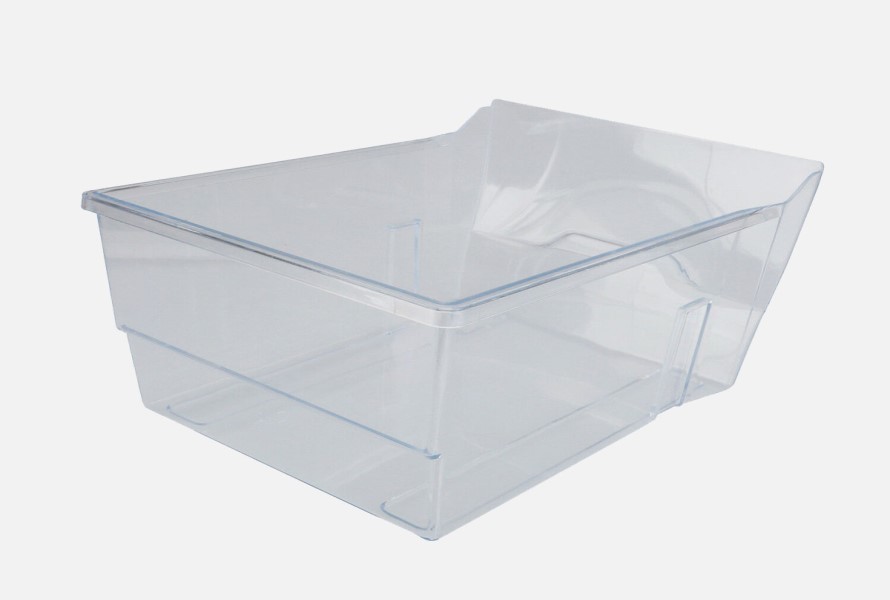GPPS plastic belongs to the Polystyrene (PS) family. It’s a rigid material but easy to process and manufacture. Plus, it offers a low-cost solution for business without sacrificing the products’ quality. Let’s delve into the article to find out about this resin, its properties and where you can use it. Follow up for more!
1. What is GPPS plastic?
The General Purpose polystyrene is a translucent, stiff thermoplastic polymer that is flexible and very easy to work with. GPPS plastic is lightweight, has high dimensional stability, and has excellent electrical insulating qualities. It is frequently utilized in many different applications, including office supplies, home goods, and packaging.

2. GPPS properties
GPPS plastic has a beautiful appearance and excellent transparency. It’s very easy to process with high production efficiency. Besides, its mechanical and electrical properties are superior. The resin can resist high heat, and have low shrinkage and low moisture absorption.
This material has high molecular weight (over 320,000), and a wide range of moldability. It’s suitable for complex-shape moldings, large-size moldings, thin-walled moldings, foam extrusion moldings and biaxially oriented polystyrene sheet (BOPS).
Below is the table of GPPS plastic’s physical properties for your reference:
| Tensile Strength |
2.30 - 3.60 N/mm² |
| Notched Impact Strength |
2.0 - 2.5 Kj/m² |
| Max Cont Use Temp |
70 - 85 oC |
| Thermal Coefficient of expansion |
80 x 10-6 |
| Density |
1.05 g/cm3
|
3. GPPS applications
GPPS is a thermoplastic that is commonly seen in many different applications since it is affordable and simple to produce. Because of its transparency and clarity, it's a popular material for food packaging. One more great thing about the General Purpose polystyrene is that it is FDA-compliant, so you can safely use GPPS products, such as salad boxes, take-out containers, and bakery trays.
Additionally, it is commonly utilized in the manufacturing of plates, cups, and disposable cups for CDs and DVDs. Dashboard panels and trim pieces are among the interior items manufactured in the car industry that employ GPPS. Moreover, GPPS plastic is utilized in everyday objects including desk accessories, plastic flatware, and picture frames. Besides, it also can be blended with SBC for transparent impact applications or HIPS for FFS thermoforming.

4. Recyclability of GPPS
Since GPPS plastic is a recyclable material, recycling it can aid in resource conservation and waste reduction. Collecting and classifying plastic trash, cleaning and shredding it into small bits, melting and reforming it into new goods are all steps in the recycling process for GPPS products. After additional processing, the recycled GPPS is turned into pellets or granules that may be utilized to make a variety of goods, including picture frames, stationery, and ornamental items. Other plastic manufacturing methods can also make use of the recovered GPPS pellets as a raw material. By lowering the need for the manufacturing of virgin plastic, the recycling of GPPS lowers the quantity of plastic trash that ends up in landfills and conserves resources.
5. GPPS and HIPS
Both GPPS and HIPS are members of the Polystyrene (PS) family, thus, they do have things in common. These resins are inexpensive, stiff, and simple to work with and produce. Their processing techniques include blow molding, thermoforming, extrusion, and injection molding.
Thanks to their FDA compliance, HIPS and GPPS are widely used in applications related to kitchenware and food packaging. They are not limited to these application areas; they may also be utilized in houseware and healthcare applications.
These polystyrene resins are easy to paint, glue, and print on, and they have good sheen and aesthetic appeal. In addition, both are recyclable.
6. An introduction to EuroPlas HIPS engineering compounds
As a leading manufacturer in the masterbatch world, we have a long list of engineering materials to help you produce high-quality end products. One of our popular items are HIPS compounds, including HIPS flame retardant compound and HIPS Conductive compound.

6.1. HIPS flame retardant compound
The compound is made of HIPS resin and flame retardant. It is an economical, impact-resistant, dimensionally stable, and electrically stable plastic with high rigidity, excellent processability, and a pleasing surface appearance. In the case of a fire, the retardant mechanism aids in reducing or stopping the spread of the flames. Based on end-products’ requirements, they will have different levels of UL94-standard flame retardants: V0, V1 and V2.
6.2. HIPS Conductive compound
HIPS conductive compound is made of HIPS resin and carbon black conductive as the reinforcement. EuroPlas has made the material satisfy different product criteria. This compound offers exceptional mechanical and impact resistant qualities. The electrical conductivity can be changed to suit the demands of the client.
Besides HIPS engineering compounds, EuroPlas also produces various high-quality materials to help your end-products perfect. Contact us right now for more details!